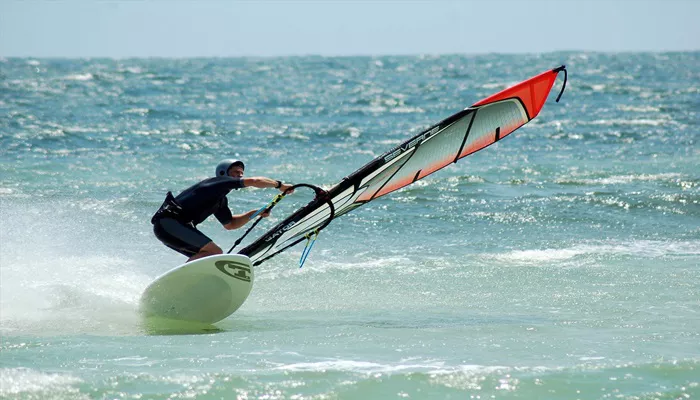Surfing is a sport that demands a combination of skill, strength, and coordination, but above all, it requires exceptional balance. Balance is the foundation of a surfer’s ability to catch waves, maneuver on the board, and maintain control in dynamic ocean conditions. Without proper balance, even the most skilled surfer would struggle to stand upright, execute turns, or ride waves effectively.
Balance in surfing is not just about standing on a board; it is a complex interplay between core stability, lower-body control, upper-body positioning, and mental focus. Whether you are a beginner learning to pop up or an advanced surfer carving through barrels, understanding the importance of balance is crucial to improving performance and reducing the risk of injury. This article explores why balance is essential for surfing and how it impacts every aspect of riding waves.
The Role of Balance in Surfing
Balance in surfing is crucial for stability, maneuverability, and control. Several key factors influence a surfer’s ability to maintain balance, including body positioning, core strength, and environmental conditions.
1. Maintaining Stability on the Board
A surfboard is an unstable platform, constantly moving in response to the ocean’s energy. Surfers must adjust their stance and body weight to remain stable on the board.
Center of Gravity: Keeping the center of gravity low by bending the knees and engaging the core enhances stability.
Foot Positioning: Proper foot placement—typically with the back foot near the tail and the front foot slightly forward—creates a stable stance that helps absorb movement.
Weight Distribution: Evenly distributing weight prevents the board from tipping over and improves control when adjusting to wave conditions.
2. Dynamic Balance While Riding Waves
Unlike standing on solid ground, surfing requires continuous adjustments to balance as the wave changes shape and speed.
Forward and Backward Adjustments: Surfers lean forward to gain speed and shift backward to slow down or perform maneuvers.
Rail-to-Rail Balance: Controlling balance from side to side allows surfers to carve turns and adjust their trajectory.
Reaction Time: Quick reactions to sudden wave changes are crucial to staying upright and avoiding wipeouts.
3. The Importance of Core Strength
A strong core is the foundation of good balance in surfing. The core muscles—abdominals, obliques, lower back, and hips—help stabilize the body and absorb wave impacts.
Engaging the Core: Keeping the core tight while surfing enhances overall control and prevents unnecessary movements.
Improved Posture: A strong core allows surfers to maintain proper posture, reducing strain on other muscles.
Better Recovery: Core strength aids in recovering from balance shifts and prevents falls.
How Balance Affects Different Surfing Movements
Surfing involves a variety of movements that require balance. Whether paddling, popping up, trimming, or performing advanced maneuvers, balance plays a critical role in execution.
1. Paddling and Wave Entry
Before standing up, surfers must balance while paddling to catch waves effectively.
Body Alignment: Keeping the body centered on the board ensures a smooth glide through the water.
Arm Coordination: Balanced paddling strokes maintain direction and speed without causing the board to tip.
Timing: A well-balanced paddler can efficiently transition from paddling to the pop-up phase without losing momentum.
2. The Pop-Up Process
The pop-up is one of the most crucial moments in surfing, requiring explosive movement and precise balance.
Hand Placement: Positioning hands correctly on the board ensures a stable push-off.
Foot Placement: Landing with feet in the correct stance prevents instability.
Smooth Transition: A controlled and balanced pop-up minimizes wobbles and maximizes control.
3. Trimming and Speed Control
Once standing, surfers must maintain balance while adjusting speed and direction.
Weight Shifting: Leaning slightly forward generates speed, while shifting weight back slows the board down.
Body Positioning: Staying compact and centered helps maintain balance through turns.
Fine-Tuning Movements: Small balance adjustments keep the board steady while navigating different wave sections.
4. Turning and Maneuvering
Executing turns, cutbacks, and aerials requires precise balance and weight distribution.
Bottom Turns: Leaning into the wave while keeping a stable core allows for controlled turns.
Cutbacks: A well-balanced cutback redirects the board efficiently back to the wave’s energy source.
Aerials: Advanced tricks demand perfect mid-air balance and landing stability.
How to Improve Balance for Surfing
Developing better balance enhances overall surfing performance. Several exercises and training techniques can help surfers improve their stability and coordination.
1. Balance Training Exercises
Bosu Ball Training: Practicing squats and lunges on a Bosu ball simulates the instability of a surfboard.
Indo Board Workouts: Using a balance board strengthens leg and core muscles, improving stability.
One-Leg Stands: Standing on one leg helps develop better control and coordination.
2. Strength and Flexibility Workouts
Core Workouts: Planks, sit-ups, and Russian twists strengthen the muscles responsible for balance.
Yoga and Stretching: Yoga improves flexibility, stability, and body awareness.
Leg Strength Training: Squats, lunges, and calf raises build lower-body strength for improved balance.
3. Surf-Specific Drills
Dry Land Pop-Ups: Practicing pop-ups on flat ground helps build muscle memory and improve balance.
Skateboarding: Riding a skateboard enhances balance and board control.
Wave Simulation Training: Using balance boards and trampolines mimics the motions of surfing.
Conclusion
Balance is an essential component of surfing, influencing every aspect of wave riding. From paddling and the pop-up to executing turns and advanced maneuvers, a surfer’s ability to maintain balance determines their success on the water.
Strengthening the core, improving lower-body stability, and practicing balance exercises can significantly enhance a surfer’s ability to ride waves with control and confidence. Whether you’re a beginner learning the basics or an experienced surfer refining your skills, mastering balance is key to progressing in the sport of surfing.

